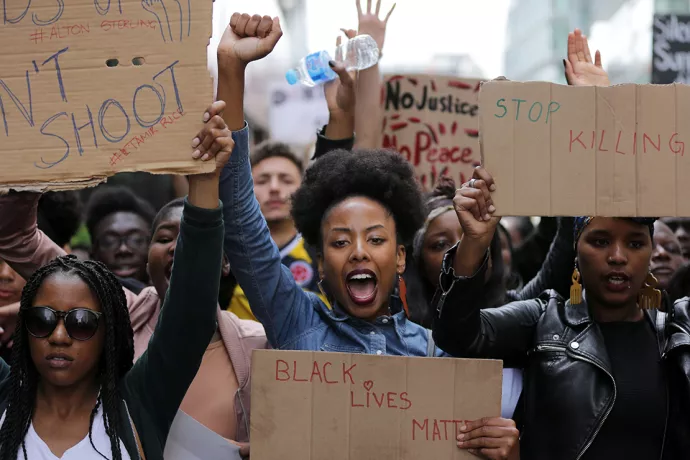
From the streets to the classroom: UTM students learn about racial justice movements in real time
What is the role of social movements in shaping society and the law? Students at U of T Mississauga are learning about the topic in real time, thanks to a sociology course that focuses on movements for racial justice in America.
Offered as an upper-year course for sociology and criminology students, Law and Social Movements (SOC329H5) looks at how popular movements and legal institutions influence efforts to produce or prevent social change.
In previous years, the course focused on social movements around the globe, but as the Black Lives Matter movement gathered steam around the world, course instructor Zachary Richer, assisstant professor, teaching stream, saw a unique opportunity to help his students better understand what was happening in the current moment.
“Typically, I would be looking at international case law and how activists interact with the law to produce social change,” says Richer, who shifted the current course content to reflect what was happening in the headlines.
“This course seizes this particular moment in society,” he says. “This course gives them the chance to trace the long history of the movement and understand how it has so much bearing today. Students learn about the movement as it is unfolding.”
“This is the largest mass mobilization in American history with spontaneous street protests that have taken place across the country, and even globally,” Richer says. “It’s important to understand, from a historical perspective, how these things have long, long tails. This movement goes back a long way, and the work is not done.”
Richer points to the importance of social movements at the end of the American Civil War, which helped pave the way forward after reconstruction.
“What do you do with a country that has decided to recognize African Americans as citizens?” he says. “You can have good laws that aren’t effective if you have powerful groups of people unwilling to follow them. The law and norms need to be connected to get them to work.”
That’s where social movements come in. “We saw activism shift to more educational campaigns and activities aimed at teaching white people that Black people are people, too.”
In the ensuing decades, activists for racial equality continued to push for societal and legal changes. Richer points to major events of the 1950s and ‘60s, like the voting rights march at Selma, and the landmark Supreme Court decision for integration in education. Those social movements helped set the stage for modern movements like Black Lives Matter or the #IdleNoMore movement of Indigenous rights.
“Unlike the constitutional amendments after the Civil War, there is no federal policy that’s going to lead the change,” Richer says. “It’s still being worked out on the ground by activists.”
Students in the sociology and criminology programs often pursue careers in law enforcement or law school. Richer says the course gives students a taste of legal topics from the perspective of social justice or inequality that might not be a key component of their future training.
Third-year criminology and sociology student Laxsega Sivaloganathan was intrigued by the contemporary take on civil rights. “These things are happening right now,” she says. “I knew about recent events and pushing against police brutality and mass incarceration, but I didn’t know about the history or the tools they were using to reach their goals.
“I wanted to know more about how the movement developed, and how law is being utilized by social movements to reach their goals.”
“It is surprising to see how much outside pressures can influence the outcomes of the law,” she adds. “Major decisions, like Brown v. the Board of Education were pushed for by people outside of the courts.”
Sivaloganathan, who hopes to become a lawyer, says she plans to carry this knowledge into work in the legal profession.
“This course shows me that it’s important to use our voices,” she says. “All of these changes came out of people who rallied together. Their collective action was much stronger than any individual voice.”
Read more:
